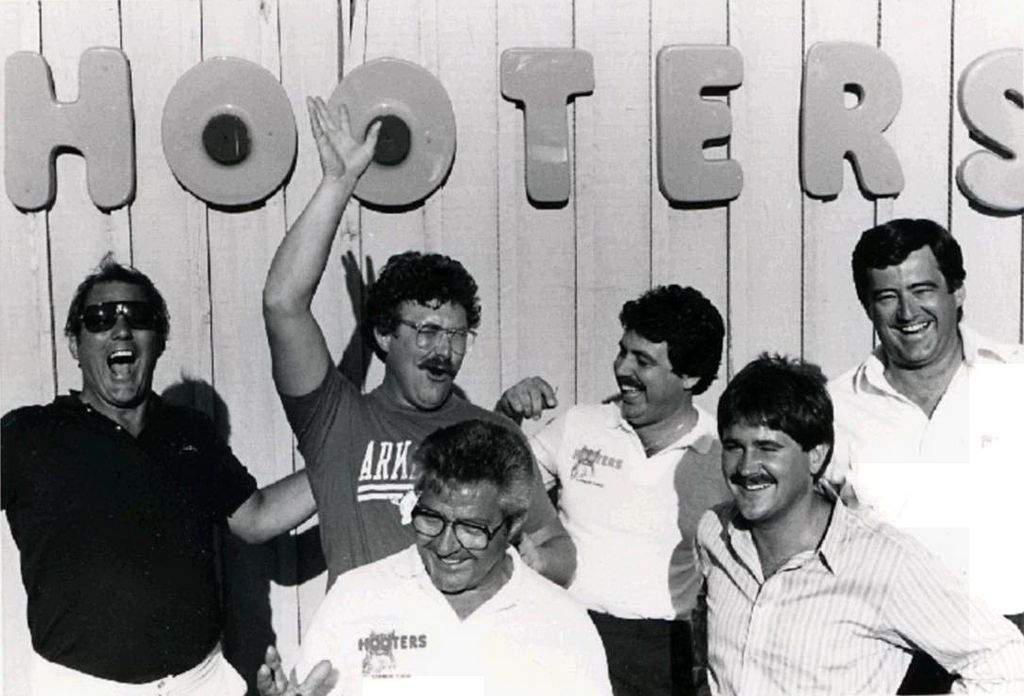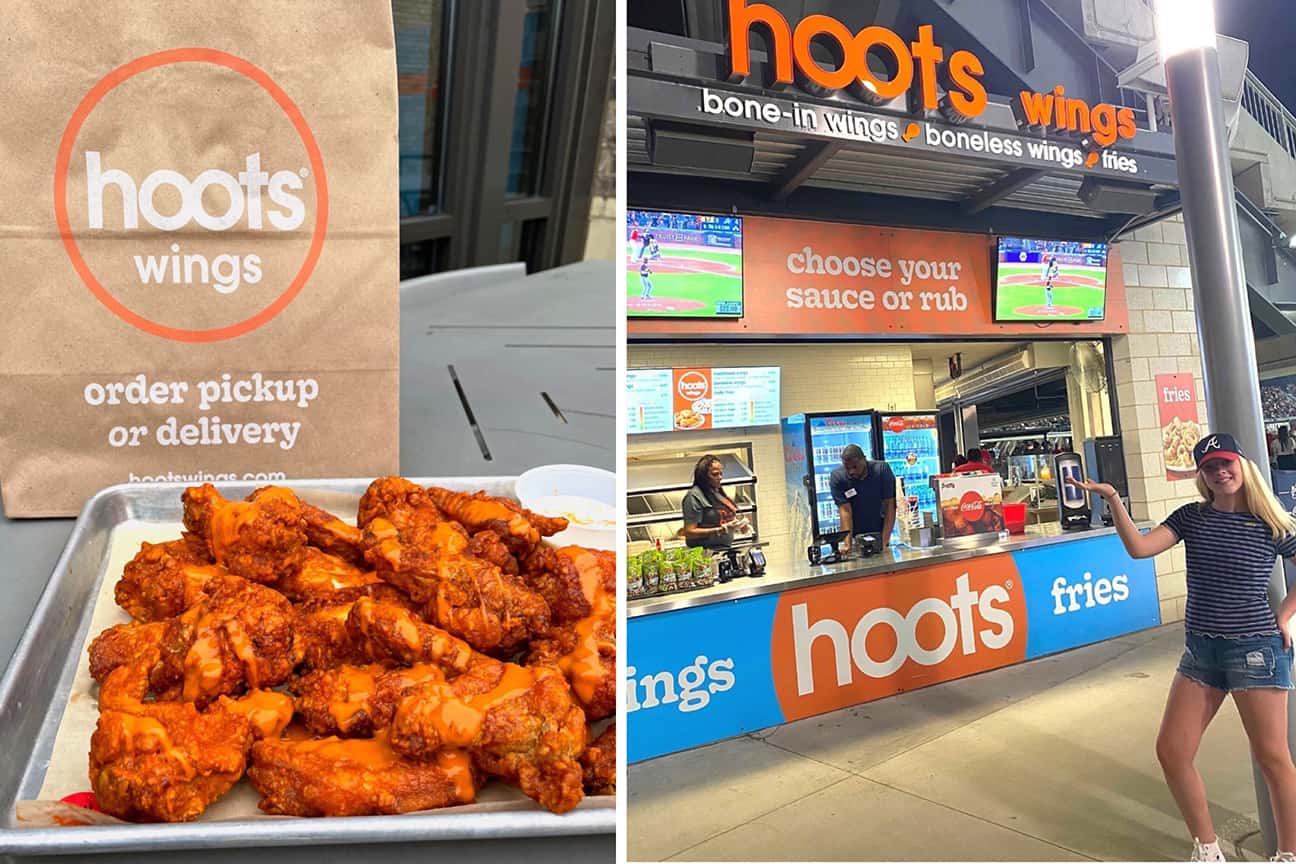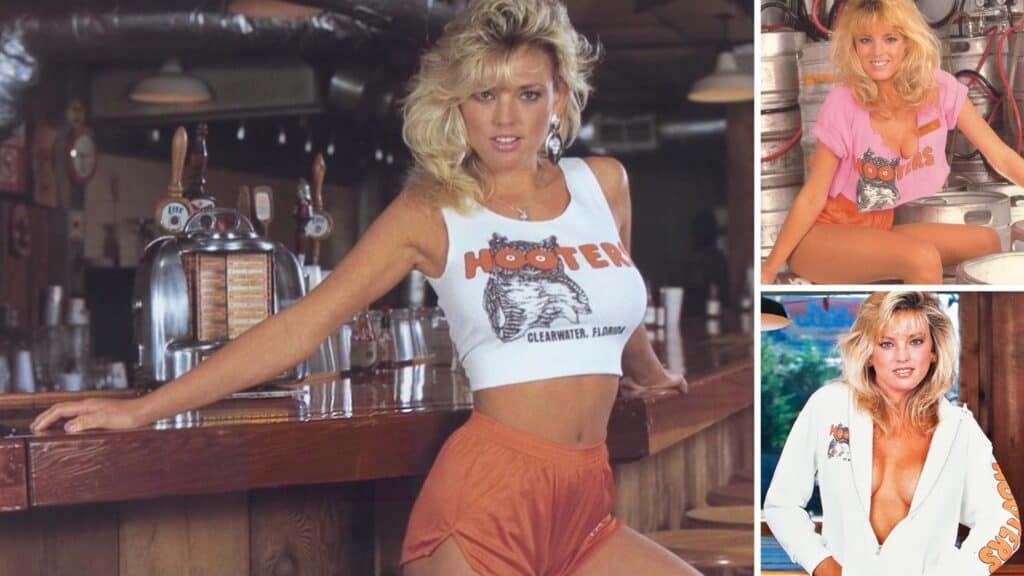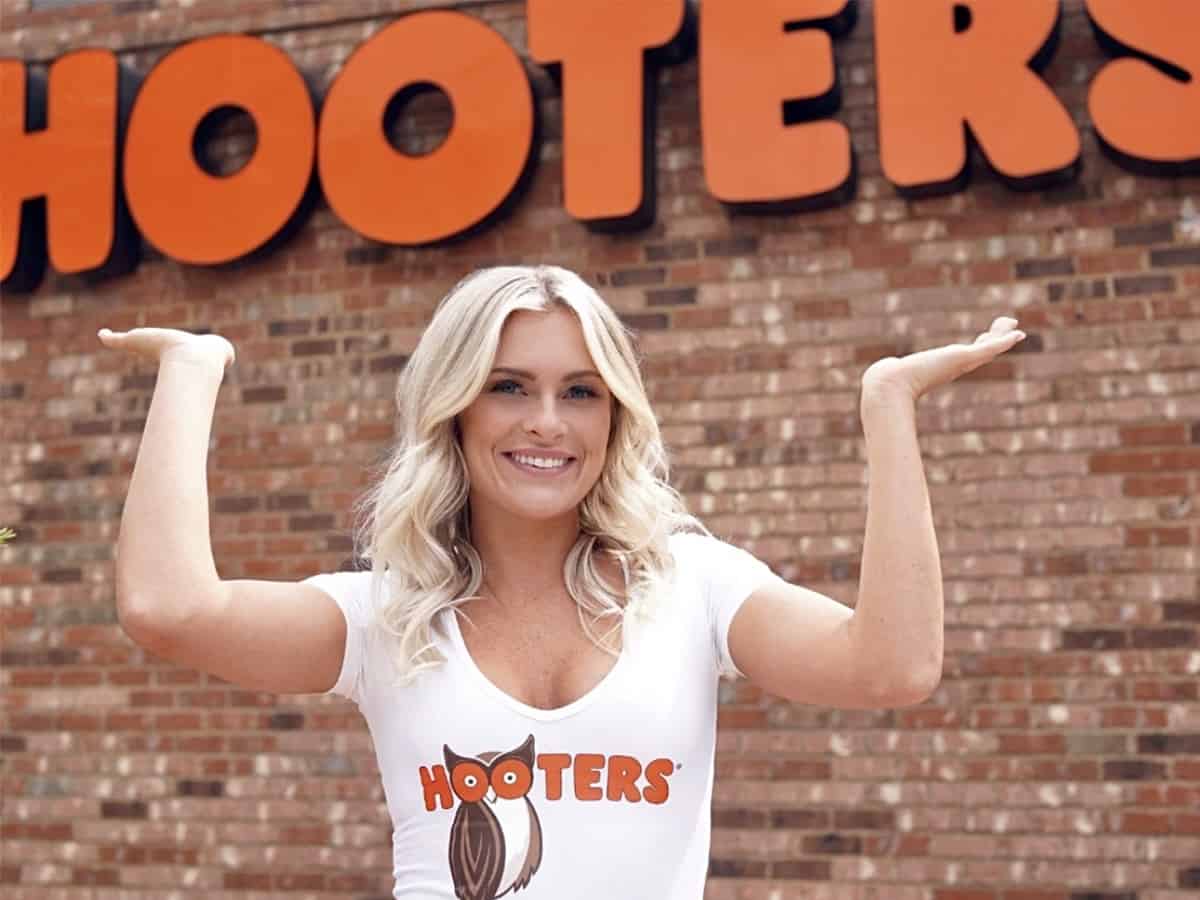Hooters is an American restaurant brand known for its beautiful Hooters Girl waitresses and its signature chicken wings. The first Hooters opened in Clearwater, FL in 1983. Today, there are approximately 430 total “Hooters” restaurants around the world.
The Launch of Hooters
Hooters was incorporated on April Fool’s Day, 1983, by six Florida businessmen who had no previous restaurant experience. The six partners wanted to create a restaurant concept rooted in the idea of a neighborhood joint that could serve as an oasis or an escape for its customers.
When deciding on a name for the restaurant, the partners found inspiration from Steve Martin’s “What I Believe,” a comedy bit that the actor-comedian had recently released on vinyl and performed on Saturday Night Live. During the bit Martin postulates, “I believe it’s derogatory to refer to a woman’s breasts as ‘boobs,’ ‘jugs,’ ‘winnebagos,’ or ‘golden bozos…’ and that you should only refer to them as ‘hooters.'”
The six partners loved the simplicity of the term “hooters” and realized that it would result in a fun play-on-words when combined with an image of an owl. This was the exact lightheartedness they were looking for in a company name and logo.
The doors to the first Hooters Restaurant opened on October 4th of that year in Clearwater, Florida.
The original menu was simple with only 12 items, none of which required a knife or fork to be eaten. The most unique item on the menu was the breaded chicken wings, which, at the time, were generally considered by restaurants to be a throwaway.
The food was served by a beautiful waitress named Lynne Austin, whose girl-next-door sex appeal compelled the six partners to hire her as the very first Hooters Girl.
Within a year, there were three-hour waits to get into the restaurant and the partners knew it was time to expand.

Hooters Growth and Ownership
In 1984, Hugh Connerty, the owner of a Colorado steakhouse chain, approached the six partners with an offer to expand the Hooters concept beyond its home territory. The six partners would get $50,000 and 3% of every dollar that Connerty generated on the Hooters’ brand. They would also keep the right to open more Hooters locations in the Tampa Bay area (and later the Chicago metro area as well). In exchange, Connerty would get the right to build Hooters everywhere else in the U.S., with the requirement that he stay faithful to every aspect of the original, right down to the secret wing sauce recipe.
Over the next three years, Connerty opened Hooters locations in multiple Florida cities and the Atlanta market. But I’m 1988, Connerty found himself short on capital and was forced to give over his Hooters development rights to his major lender, Robert Brooks.
At this point, there were two separate entities that owned and/or operated Hooters restaurants. There was Hooters Inc. (known as “Original Hooters”) in Clearwater, owned and run by the original six (and Neil Kiefer has served as CEO since 1992). And there was Hooters of America, based in Atlanta, owned and run by Brooks, a wealthy businessman who’d been in the food service industry for many years.
Throughout the 1990s and early 2000’s, Brooks aggressively grew the Hooters brand in both the U.S. and overseas. He took the total number of Hooters locations to 430, opening franchises in such diverse locations as San Diego, CA, São Paulo, Brazil, and Shanghai, China. He launched a Hooters-branded magazine, pro golf tour, stock car racing series, and credit card. He even started Hooters Air, an airline with Hooters Girl flight attendants, which flew to 15 destinations and operated for three years before shutting down in 2006, the same year that Brooks passed away at the age of 69. In the years just prior to Brooks’s death, it is estimated that Hooters was generating roughly $750 million in revenue annually.

2006 also saw the opening of the Hooters Casino Hotel in Las Vegas. In 2004, the original partners in Hooters Inc., which had retained the rights to open a casino in Las Vegas, entered into a joint venture with several other investors to convert and rebrand the Hotel San Remo into the Hooters Casino Hotel. As part of the deal, Hooters of America would promote the hotel/casino in all 400 Hooters locations and would to be paid a 2 percent royalty on Hooters Casino Hotel sales. The project included the refurbishment of all 711 hotel rooms and the addition of eight new restaurant/bars, including, of course, a Hooters, and a Dan Marino’s Fine Food and Spirits. Unfortunately, the Hooters Casino Hotel did not live up to expectations and the joint venture group was forced to file for Chapter 11 bankruptcy in 2011. The property continued to operate under the Hooters brand name as it changed owner/operators several times until 2019 when it took on its current name, the Oyo Hotel & Casino Las Vegas.
Meanwhile, Coby Brooks continued to run Hooters of America (he’d been named CEO by his father in 2003) until 2011, when the company was sold to private equity firm Chanticleer Holdings as part of efforts to settle the Brooks estate.
Chanticleer replaced Coby Brooks at the head of Hooters with Terry Marks, a former Coca-Cola Enterprises executive. During the first several years of his CEO tenure, Marks streamlined the company, closing roughly 7% of the Hooters locations. But then in 2017, Marks oversaw the launch of the company’s spinoff fast-casual concept, Hoots Wings, which opened its first location in the Chicago metro area.
The concept behind Hoots Wings was to build a menu solely around the best-selling, most popular items and make it available in a 1,500-square-foot space with minimal seating and without the girls, the bars, the TVs (versus the typical Hooters restaurant, which is a 5,000- to 7,000-square-foot sports bar and casual dining restaurant). Restaurant industry insiders like to joke that “Hoots is no breasts, just wings.”

In 2019, Chanticleer Holdings sold Hooters of America to Nord Bay Capital and TriArtisan Capital Advisors (a co-investor in P.F. Chang’s and TGI Fridays). At the time of the sale, Hooters had achieved nine consecutive quarters of same store sales growth and 13 consecutive quarters outperforming the casual dining bar and grill category.
In June 2020, long-time Hooters employee Sal Melilli was promoted from Chief Operating Officer to CEO. Under Melilli’s leadership, the company has continued to push the Hoots Wings brand with aggressive franchise development efforts (there are more than 100 committed units from multiple franchisees). Melilli has also launched three delivery-only ”virtual brands,” Hootie’s Burger Bar, Hootie’s Chicken Tenders, and Hootie’s Bait & Tackle, in order to leverage excess kitchen capacity and to reach customers on the Uber Eats, DoorDash, etc. And, Hooters has continued to invest in its core in-store dining experience by rolling out a variety of ways customers can participate in sports betting in states where gaming is legal. For example, Hooters has launched live betting in Indiana, Virginia, and Tennessee, formed partnerships with DraftKings and PointsBet, and placed in-store gaming machines in select Georgia restaurants.
In 2022, under the Hooters of America umbrella there were approximately 380 locations that generated roughly $1 billion in systemwide sales.
Today, Hooters of America, LLC, is the franchisor and operator of around 400 Hooters branded locations in 38 states and 24 countries. Hooters Inc. owns 14 Original Hooters in the Chicago, IL area and 11 in the Tampa Bay, FL area.
Hooters Girls
Known for being attractive and outgoing, as well as their ability to provide excellent customer service, Hooters Girls are the iconic waitresses who work at Hooters restaurants. The company has described the look of the Hooters Girl as a mix of “All American Cheerleader” and “Girl Next Door.”

Hooters Girls are identified by their distinctive uniform of a form-fitting white tank or sport top featuring the “Hootie the Owl” logo, bright orange Dolphin shorts, and suntan (or darker) pantyhose. Importantly, name tags must be worn at all times on the left side of the top.
The job of a Hooters Girl is to take orders, serve food and drinks, maintain a clean and tidy dining area, and to make customers feel welcome and entertained while they enjoy their meals. Hooters Girls play an essential role in creating the unique atmosphere and experience that Hooters restaurants are known for.
As the company likes to say, “customers can go to many places for wings and beer, but it is our Hooters Girls who make our concept unique.”
There are approximately 300,000 current and former Hooters Girls around the world, including more than 15,000 women currently working as Hooters Girls.
The First Hooters Girl: Lynne Austin
A 22-year-old bikini model by the name of Lynne Austin was chosen by the company founders to be the very first Hooters Girl when the restaurant opened in 1983.
Austin then donned the cover of the first Hooters Calendar in 1985. In order to drum up publicity, Hooters sent Austin’s calendar photos to Playboy. The magazine responded: “Who’s the beautiful girl?” They were so enamored with Austin that they chose her to be the centerfold of the July issue in 1986 (along with an article about the Hooters restaurant).
The Hooters Calendar
Thousands of Hooters Girls from around the world compete every year for a chance to be one of the 200 chosen to be showcased in the annual Hooters Calendar. The 16” x 11” sized calendar spans 15 months, each featuring a collage of roughly a dozen swimsuit clad Hooters Girls.
For every calendar sold, Hooters donates $1 toward its Give A Hoot fundraising effort benefiting the V Foundation for Cancer Research and the Kelly Jo Dowd Breast Cancer Research Fund.

Miss Hooters International Pageant
In June 2022, Hooters held the 25th anniversary of its Miss Hooters International Pageant. In recent years the finalists have competed for a cash prize ranging from $30,000 to $50,000. In competing for the crown, Hooters Girls contestants from around the world are evaluated based on responses to interview questions, personality and overall contribution to the Hooters brand, as well as swimsuit, philanthropy and uniform rounds.
Hooters Girls And Philanthropy
Hooters likes to say that Hooters Girls are “much more than just a pretty face.” This is perhaps most evident in the charitable initiatives encouraged by the company and eagerly embraced by Hooters Girls. This includes both community volunteer work (local food banks, animal shelters, beach cleanup, local charity drives) and nationwide efforts. For example, inspired by Hooters Girl Kelly Jo Dowd, who lost her battle with breast cancer in 2007, Hooters Girls have raised nearly $9 million through 2022 in support of breast cancer research, much of it through the grant in Kelly Jo’s name to the V Foundation for Cancer Research. In addition, with Hooters Girls often leading the charge, the Hooters Community Endowment Fund raises money for local and national charities like the Make-A-Wish Foundation, U.S.O., Special Olympics, American Diabetes Association, Juvenile Diabetes Foundation, and the Muscular Dystrophy Association.

